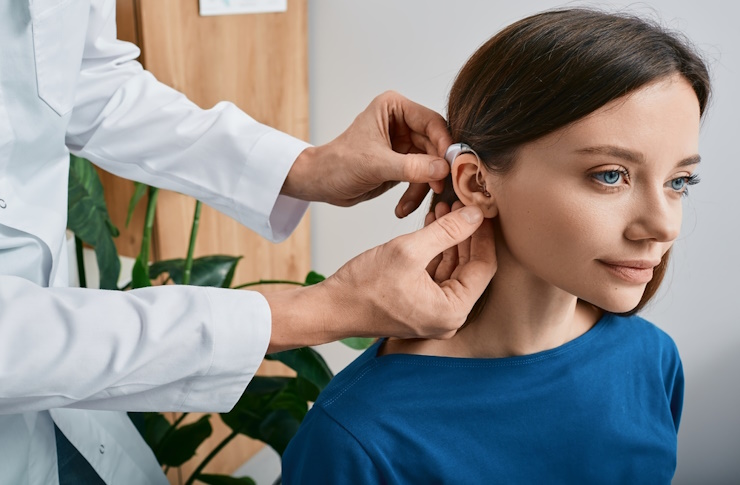How To Clear Stubborn Ear Wax Safely
Ear wax buildup can cause discomfort, hearing difficulties, and a feeling of fullness in your ears. While ear wax naturally protects your ear canal from dust and bacteria, excessive accumulation can become problematic. Understanding proper removal techniques helps prevent damage to your delicate ear structures while effectively addressing blockages. Many people resort to unsafe methods that can push wax deeper or cause injury, making it essential to learn medically approved approaches for maintaining healthy ears.

Safe Ear Wax Removal Methods at Home
Several safe techniques can help soften and remove ear wax without professional intervention. Mineral oil drops, available at most pharmacies, can soften hardened wax when applied daily for several days. Baby oil and glycerin work similarly, helping to loosen stubborn buildup. Warm water irrigation using a bulb syringe can gently flush out softened wax, but the water temperature should be body temperature to avoid dizziness.
Over-the-counter ear drops containing hydrogen peroxide or saline solutions provide another effective option. These products help break down wax naturally while being gentle on sensitive ear tissues. Always follow package instructions and avoid using these methods if you have a perforated eardrum or active ear infection.
How to Clear Ear Wax Safely Without Damage
Proper technique is crucial when attempting ear wax removal at home. Never insert cotton swabs, bobby pins, or other objects into your ear canal, as these can push wax deeper or puncture your eardrum. Instead, clean only the outer portion of your ear with a washcloth during regular bathing.
When using ear drops, lie on your side with the affected ear facing upward. Apply the recommended number of drops and remain in this position for several minutes to allow proper penetration. Gently tilt your head to let excess liquid drain out, wiping away any wax that emerges naturally.
For irrigation, use lukewarm water in a bulb syringe, directing the stream toward the ear canal wall rather than straight into the ear. This technique helps avoid pressure buildup that could damage your eardrum.
Best Ways to Remove Ear Wax Professionally
When home remedies prove insufficient, professional removal becomes necessary. Healthcare providers use specialized tools and techniques unavailable to consumers. Otoscopes allow doctors to visualize the ear canal and assess wax location and consistency before removal.
Professional irrigation uses controlled pressure and temperature to safely flush out stubborn blockages. Curettes, small spoon-shaped instruments, enable precise manual removal under direct visualization. Some practitioners use suction devices that gently extract wax without pushing it deeper.
Microsuction, performed by audiologists or ENT specialists, uses a microscope and tiny suction tube for extremely precise removal. This method works particularly well for hard, impacted wax that resists other techniques.
| Service Type | Provider | Cost Estimation |
|---|---|---|
| Basic Ear Cleaning | Primary Care Doctor | $150-$300 |
| Professional Irrigation | Urgent Care Clinic | $100-$200 |
| Microsuction | ENT Specialist | $200-$400 |
| Audiologist Cleaning | Hearing Center | $75-$150 |
Prices, rates, or cost estimates mentioned in this article are based on the latest available information but may change over time. Independent research is advised before making financial decisions.
When to Seek Professional Help
Certain situations require immediate professional attention rather than home treatment attempts. Severe hearing loss, persistent ear pain, or discharge from the ear canal indicate potential complications that need medical evaluation. If you experience dizziness, ringing in your ears, or suspect a perforated eardrum, avoid home remedies entirely.
People with diabetes, compromised immune systems, or previous ear surgeries should consult healthcare providers before attempting any removal methods. Children’s ears require special care, and professional evaluation ensures safe treatment appropriate for their developing ear structures.
Prevention Strategies for Future Buildup
Preventing excessive ear wax accumulation reduces the need for frequent removal procedures. Avoid overcleaning your ears, as this can stimulate increased wax production. Your ears naturally self-clean through jaw movements during talking and chewing, so minimal intervention often works best.
Regular ear hygiene involves cleaning only the outer ear with a washcloth during bathing. If you’re prone to wax buildup, periodic use of mineral oil drops can help maintain softer wax consistency that naturally migrates out of the ear canal.
For individuals who frequently develop impacted wax, establishing a relationship with a healthcare provider ensures consistent, safe management. Some people benefit from scheduled professional cleanings every six months to prevent problematic accumulation.
Understanding your ear’s natural processes and recognizing when professional help is needed protects your hearing while maintaining optimal ear health. Safe removal techniques, whether performed at home or professionally, preserve your ear’s delicate structures while effectively addressing wax-related concerns.
This article is for informational purposes only and should not be considered medical advice. Please consult a qualified healthcare professional for personalized guidance and treatment.




